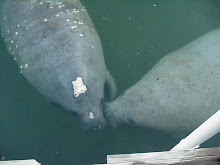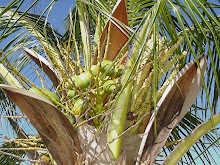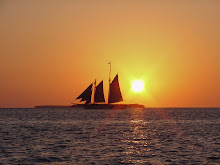Just over a year ago (February 2016...I told you I am woefully behind in my blog posting), The Colonel, Darling-Sister-In-Law (DSIL) and I took a little day trip to the 125-acre Mound Key Archaeological State Park.
(Image from the Internet)
The only way to get to Mound Key is by boat.
We had to get up early and head south to catch the boat to Mound Key. The boat ride was nice (about 30 minutes). It was sunny and a bit breezy. We finally began our approach to the key.
Mound Key was developed over 2,000 years of the Calusa Indian (Prehistoric Native Americans) civilization. The key probably began as a flat, mangrove-lined oyster bar that barely rose above the waters of Estero Bay. Located in the center of an estuary, food was easy to find. As the native population grew, the remains of their food were collected and heaped into middens. Among the forests of mangrove trees, the mounds and ridges of Mound Key now tower more than 30 feet above the waters of the bay.
Mound Key was believed to be the capital and ceremonial center of the Calusa when the Spanish first attempted to colonize Southwest Florida. The Calusa had their first encounter with the Spanish in the early 1500s. The first recorded contact with the Calusa was in 1513 when Spanish explorer Juan Ponce de Leon landed in the area.
(Image from the Internet)
(Image from the Internet)
In 1566, the appointment of Spain's first Governor of Florida, Pedro Menendez de Aviles happened on this key. This was also the site of the first Jesuit mission to the new world, San Antonio de Carlos. The Spanish period at Mound Key was hard fought and short lived and was abandoned by 1569. However, with the Spanish came diseases for which the Calusa had no immunity and would be the demise of their population combined with continued warfare with local tribes bringing an end to their once great society around 1750.
When the Calusa were no longer living on Mound Key, it was frequented by pirates and fishermen and in 1891 it was homesteaded by Frank Johnson. The Johnsons brought in other families to farm the key until it was sold to the utopian Koreshans in 1905.
The Colonel, DSIL and I stepped off the boat and onto Mound Key. We began walking on a path, away from the water's edge.
The path took us deeper into the landscape of the key and as we went deeper into the key we were also gaining altitude. We also passed by the only palm tree on the key.
Along the way there were interpretive displays and a handful of local archaeologists who told us about the Calusa Indians and showed us some replicas of Calusa artifacts.
We eventually made it to the top of the 31-foot mound of Mound Key (There are also two smaller mounds on the key). It is believed the ancient home of the Calusa King once stood on this huge mound. We could see the Bonita Beach landscape from our vantage point.
We walked from one end of the key to the other (15 to 20 minutes one way).
(Image from the Internet)
There was an old cistern still on the key from the early 20th century.
We made it to the other end of the key and saw the kayak launching area. There was also an archaeologist who demonstrated how the Calusa Indians blew in Conch shells. The sound could be used as an early warning signal.
It was time to head back to the other side of Mound Key and catch the pontoon boat for our return trip.
We were hungry for lunch when the boat landed. We decided to eat at a restaurant called Flippers.
This was our lunch and the pretty view from our table.
Mound Key...for such a small piece of land, nestled in the waters of Estero Bay, it sure has hosted a lot of history throughout the years.





































































Very interesting. Did the Johnsons plant the one palm tree? Jenn
ReplyDelete